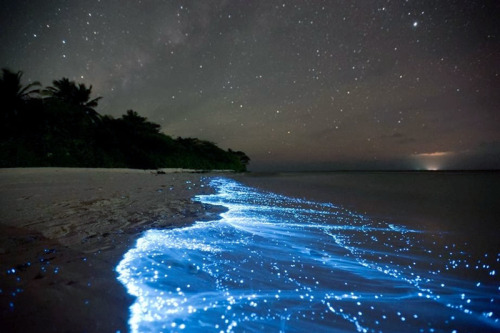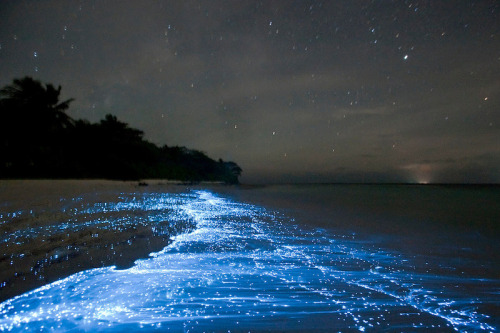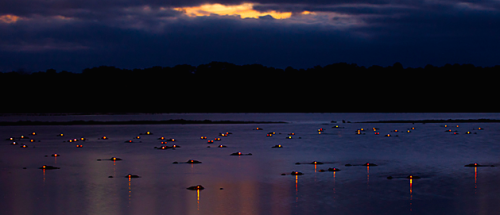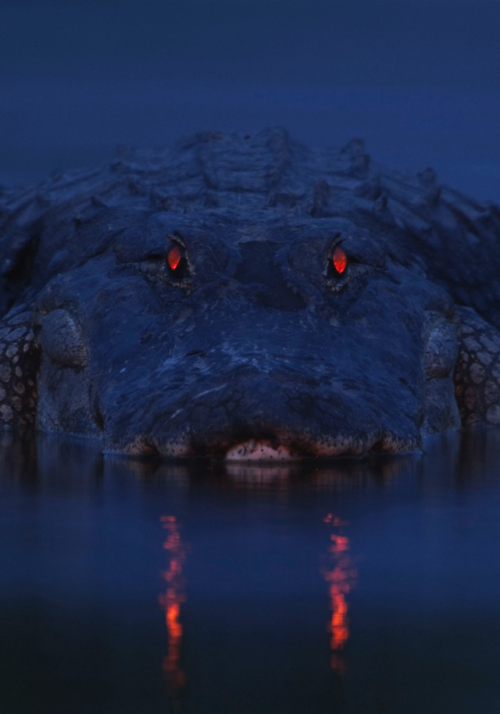
Amateur astronomer, owns a telescope. This is a side blog to satiate my science-y cravings! I haven't yet mustered the courage to put up my personal astro-stuff here. Main blog : @an-abyss-called-life
212 posts
Latest Posts by starry-shores - Page 4
Dear @thought-cafe team, we need more Crash Course Astronomy episodes! Can you please do a Season 2? Dr. Phil Plait is awesome, and we miss him!

If you’re excited about the juno news today, sink your teeth into a Crash Course episode that’s all about Jupiter! 🔭 https://youtu.be/Xwn8fQSW7-8
“The stars, like dust, encircle me In living mists of light; And all of space I seem to see In one vast burst of sight.”
—
Isaac Asimov

Eclipsing Suns
I can’t remember which novel JR said influenced the world of S6, but I was recently reminded of Asimov’s Nightfall and wonder whether its eclipse narrative might have some bearing on the plot …
[Spoilers for Nightfall ahead – highly recommend you read the story (it’s short!)]
For anyone not familiar, Nightfall is set on a planet with six suns - enough suns that the planet never experiences darkness. Every 2000 years or so, the suns and the planet’s moon align just so, and an eclipse occurs. And every 2000 years, something cataclysmic occurs that ends civilization. The only records of the event are embedded in the mythology of an ancient cult’s scripture.
During one of these cycles, a team of astronomers and psychologists collaborate with the cult, and together determine that they are weeks away from the next eclipse. The scientists lock their loved ones away in a bunker and prepare equipment to document the eclipse, which they do not believe they will survive. (Having never experienced nighttime, they have a pathological fear of the dark. Even more concerning, however, is the threat of the Stars mentioned in ancient scripture, for these have the power to burn cities and drive men to madness.)
And when the eclipse occurs and people see the night sky for the first time in two thousand years, they are struck with terror and knowledge of their insignificance, and all the world over, people set their cities on fire to blot out the stars’ truth and the horror of the long night.
… What little we do know about S6 reminds me of this. Like Clarke and co., these scientists attempt to learn what happened to a lost civilization (Eligius III) while hampered by a cult-like organization (Second Dawn? Wonkru? Whoever now inhabits the planet?) that has attached mythological meaning to the natural phenomenon of the eclipse. JR has said that something crucial happens when the suns eclipse, and though suns eclipsing themselves does not create total darkness, as here, we can guess that there will be psychological ramifications attached to it.


Sea of Stars, Vaadhoo Island, Maldives by Doug Perrine
my favorite genre of photo is “excited scientist lying down next to a very big fossil/animal/object/etc they have found to show off how big it is”

Tarantula Nebula by NASA Hubble




Erupcion Cordon Caulle, Region de Los Rios, Chile. by Francisco Negroni






Farewell to Cassini



Captain’s Log | September 15, 2017
The end is now upon us. Within hours of the posting of this entry, Cassini will have burned up in the atmosphere of Saturn … a kiloton explosion, spread out against the sky in a pyrrhic display of light and fire, a dazzling flash to signal the dying essence of a lone emissary from another world. As if the myths of old had foretold the future, the great patriarch will consume his child. At that point, that golden machine, so dutiful and strong, will enter the realm of history, and the toils and triumphs of this long march will be done.
For those of us appointed long ago to undertake this journey, it has been a taxing 3 decades, requiring a level of dedication that I could not have predicted, and breathless times when we sprinted for the duration of a marathon. But in return, we were blessed to spend our lives working and playing in that promised land beyond the Sun.
My imaging team members and I were especially blessed to serve as the documentarians of this historic epoch and return a stirring visual record of our travels around Saturn and the glories that we found there. This is our gift to the citizens of planet Earth.
So, it is with both wistful, sentimental reflection and a boundless sense of pride in a commitment met and a job well done that I now turn to face this looming, abrupt finality.
It is doubtful we will soon see a mission as richly suited as Cassini return to this ringed world and shoulder a task as colossal as we have borne over the last 27 years.
To have served on this mission has been to live the rewarding life of an explorer of our time, a surveyor of distant worlds. We wrote our names across the sky. We could not have asked for more.
I sign off now, grateful in knowing that Cassini’s legacy, and ours, will include our mutual roles as authors of a tale that humanity will tell for a very long time to come.
Ultra-Close Orbits of Saturn = Ultra-Cool Science
On Sept. 15, 2017, our Cassini spacecraft ended its epic exploration of Saturn with a planned dive into the planet’s atmosphere–sending back new science to the very last second. The spacecraft is gone, but the science continues!

New research emerging from the final orbits represents a huge leap forward in our understanding of the Saturn system – especially the mysterious, never-before-explored region between the planet and its rings. Some preconceived ideas are turning out to be wrong while new questions are being raised. How did they form? What holds them in place? What are they made of?

Six teams of researchers are publishing their work Oct. 5 in the journal Science, based on findings from Cassini’s Grand Finale. That’s when, as the spacecraft was running out of fuel, the mission team steered Cassini spectacularly close to Saturn in 22 orbits before deliberately vaporizing it in a final plunge into the atmosphere in September 2017.

Knowing Cassini’s days were numbered, its mission team went for gold. The spacecraft flew where it was never designed to fly. For the first time, it probed Saturn’s magnetized environment, flew through icy, rocky ring particles and sniffed the atmosphere in the 1,200-mile-wide (2,000-kilometer-wide) gap between the rings and the cloud tops. Not only did the engineering push the spacecraft to its limits, the new findings illustrate how powerful and agile the instruments were.
Many more Grand Finale science results are to come, but today’s highlights include:
Complex organic compounds embedded in water nanograins rain down from Saturn’s rings into its upper atmosphere. Scientists saw water and silicates, but they were surprised to see also methane, ammonia, carbon monoxide, nitrogen and carbon dioxide. The composition of organics is different from that found on moon Enceladus – and also different from those on moon Titan, meaning there are at least three distinct reservoirs of organic molecules in the Saturn system.

For the first time, Cassini saw up close how rings interact with the planet and observed inner-ring particles and gases falling directly into the atmosphere. Some particles take on electric charges and spiral along magnetic-field lines, falling into Saturn at higher latitudes – a phenomenon known as “ring rain.” But scientists were surprised to see that others are dragged quickly into Saturn at the equator. And it’s all falling out of the rings faster than scientists thought – as much as 10,000 kg of material per second.

Scientists were surprised to see what the material looks like in the gap between the rings and Saturn’s atmosphere. They knew that the particles throughout the rings ranged from large to small. They thought material in the gap would look the same. But the sampling showed mostly tiny, nanograin- and micron-sized particles, like smoke, telling us that some yet-unknown process is grinding up particles. What could it be? Future research into the final bits of data sent by Cassini may hold the answer.

Saturn and its rings are even more interconnected than scientists thought. Cassini revealed a previously unknown electric current system that connects the rings to the top of Saturn’s atmosphere.

Scientists discovered a new radiation belt around Saturn, close to the planet and composed of energetic particles. They found that while the belt actually intersects with the innermost ring, the ring is so tenuous that it doesn’t block the belt from forming.

Unlike every other planet with a magnetic field in our Solar System, Saturn’s magnetic field is almost completely aligned with its spin axis. Think of the planet and the magnetic field as completely separate things that are both spinning. Both have the same center point, but they each have their own axis about which they spin. But for Saturn the two axes are essentially the same – no other planet does that, and we did not think it was even possible for this to happen. This new data shows a magnetic-field tilt of less than 0.0095 degrees. (Earth’s magnetic field is tilted 11 degrees from its spin axis.) According to everything scientists know about how planetary magnetic fields are generated, Saturn should not have one. It’s a mystery physicists will be working to solve.

Cassini flew above Saturn’s magnetic poles, directly sampling regions where radio emissions are generated. The findings more than doubled the number of reported crossings of radio sources from the planet, one of the few non-terrestrial locations where scientists have been able to study a mechanism believed to operate throughout the universe. How are these signals generated? That’s still a mystery researchers are looking to uncover.
For the Cassini mission, the science rolling out from Grand Finale orbits confirms that the calculated risk of diving into the gap – skimming the upper atmosphere and skirting the edge of the inner rings – was worthwhile.

Almost everything going on in that region turned out to be a surprise, which was the importance of going there, to explore a place we’d never been before. And the expedition really paid off!
Analysis of Cassini data from the spacecraft’s instruments will be ongoing for years to come, helping to paint a clearer picture of Saturn.
To read the papers published in Science, visit: URL to papers
To learn more about the ground-breaking Cassini mission and its 13 years at Saturn, visit: https://www.nasa.gov/mission_pages/cassini/main/index.html
Make sure to follow us on Tumblr for your regular dose of space: http://nasa.tumblr.com.
“Cassini's own discoveries were its demise.”
– Earl Maize, its project engineer @ JPL
current mood: emotional about a space probe
Cassini is the first spacecraft that was destroyed not from malfunction, or as a necessary end result of its mission… but out of love.
The probe was running out of propulsion fuel, but there’s no reason it couldn’t have been pushed into a stable orbit from where it could collect data and send back pictures for a long while yet.
Except it had detected that one of Saturn’s moons held liquid water and organic compounds: a world that might support life. A world that is, at the least, dreaming of life.
There is no orbit stable enough to be certain that the probe, carrying radioactive batteries and Earth’s bacteria, would never have come into contact with Enceladus. A delicate island of alien life could have been snuffed out or overrun. The sheep could have eaten the rose.
So instead - for the love of this fragile possibility, this potential that might yet never be realized - Cassini was brought into a final, intimate tango with Saturn.
But of course, all space probes are built for the sake of awe, which is nearly love. Science is rational, but scientists are driven to understand the universe just as the religious strive to know the face of God.
The Cassini probe was a 4 billion dollar machine for understanding Saturn. And yesterday, two decades after it launched from our planet, it was destroyed while sending us information about Saturn it never could have gathered from a distant, stable orbit: advancing its purpose, even though it would be consumed.

The black swan (Cygnus atratus) is one of my favourite birds, mainly because it’s hella gay. An estimated one-quarter of all parings are homosexual, mostly males. These pairs have been observed to either steal eggs, or form a relationship with a female, driving her away after the eggs have been laid.
The black swan is almost exclusively herbivorous, and while there is some regional and seasonal variation, the diet is generally dominated by aquatic and marshland plants.
Photo credits: Jón Óskar Hauksson





the red eyeshine of the alligator occurs when light enters its eyes, passes through the rods (light receptors) and cones (color receptors) of the retina, strikes a membrane behind the retina called a tapeatum, and is then reflected back through the eye to the light source. most of the animals with eyeshine are, like alligators, night hunters who must make use of limited light. photos by larry lynch and david moynahan
if you think the ocean now is a scary fuck then you haven’t seen the scary fuck that is the prehistoric ocean
so im watching the history channel on youtube (i could tell you so much on short nosed bears rn) but i just finished watching this thing called the mosasaur and its your pretty basic mega water dinosaur, 50 feet long, eel tail, sonar, doesn’t chew its food etc, but then it got dark
these shits were top predators, no competition whatsoever…..except from themselves. the narrator was saying that even though there was nothing to oppose them, they somehow continued to evolve into like fifty 50 different species of this mega predator. And its really cool because it started as a three foot lizard and in just 6 million years it became “the ultimate success story of evolution”.
they had these weird funky teeth too. not only were they really big and strong like you’d expect but they had teeth in the roof of them mouth cuz they’d slide their dinner down their mouth like a conveyer belt. and since their so big you’d think wow how did no one see them? apparently sea creatures are frickin blind or something bc this megabeasty would just lie on the frickin bottom of the ocean and wait for something to swim up. then it would propel its ass up with this snaky tail and just boosh i ated you
but mosasaurs kept evolving even though they were literally the top predator. why is that?? that doesn’t happen in nature. turns out they were causing themselves to evolve. turns out they’re one of the only species (including humans) that naturally commits murder aka kills their own kind. they’ll bite each others heads until they can get a good grip then one of them snaps the neck. and they didn’t even eat the other guy. they did it. for. fun. (apparently they thrive on violence????)
and im over here going like wtf. but then it got worse. these scary ass motherfuckers began to go anywhere they pleased. they evolved even more and then moved into fresh water. like swamps and rivers. thats terrifying. NOTHING On eARth could stop them.
Nothing on Earth ;) aka enter the extinction comet
BUT then I learned that even the bigass dino killing comet didn’t even kill the thing. They literally had to starve to death because all of their prey died out. NOPE not them. THey didn’t die out because they’re like dinosaur gods or some shit. EVERYTHING DIED BUT THEM

Leedsichthys is a giant member of the Pachycormidae, an extinct group of Mesozoic bony fish, that lived in the oceans of the Middle Jurassic period. The first remains of Leedsichthys were identified in the nineteenth century. Leedsichthys fossils have been found in England, France, Germany and Chile. Along with its close pachycormid relatives Bonnerichthys and Rhinconichthys, Leedsichthys is part of a lineage of large-sized filter-feeders who swam the Mesozoic seas for over 100 million years, from the middle Jurassic until the end of the Cretaceous period. Pachycormids might represent an early branch of Teleostei, the group most modern bony fishes belong to; in that case Leedsichthys is the largest known teleost fish.
Leedsichthys fossils have been difficult to interpret, because the skeletons were not completely made of bone. Large parts consisted of cartilage that did not fossilise. On several occasions the enigmatic large partial remains have been mistaken for stegosaurian dinosaur bones. As the vertebrae are among the parts that have not been preserved, it is hard to determine the total body length. Estimates have varied wildly. At the beginning of the twentieth century a length of nine metres was seen as plausible, but by its end Leedsichthys was sometimes claimed to have been over thirty metres long. Recent research has lowered this to about sixteen meters for the largest individuals. Skull bones have been found indicating that Leedsichthys had a large head with bosses on the skull roof. Fossilised bony finrays show large elongated pectoral fins and a tall vertical tail fin. The gill arches were lined by gill rakers, equipped by a unique system of delicate bone plates, that filtered plankton from the sea water, the main food source.
I really wish people would jump on the marine exploration bandwagon as much as space exploration.

I had a really stupid idea and had to paint it for a friend.


Helicoprion For over 100 years, the spiral tooth fossils of Helicoprion have baffled everyone who tried to figure them out, and more theories were proposed than you can believe (see top of picture). In the last year, some CT scans done by Leif Tapanila at Idaho State and coauthors have finally nailed down the location of the tooth-whirl: in the throat! The best idea of its purpose is ratcheting its catch down the throat. You can see the current, accepted reproduction at the bottom of the picture (by great Paleo-artist Ray Troll). -MrA Fossil image source: https://en.wikipedia.org/wiki/Helicoprion#/media/File:Spirale_dentaire_d%27helicoprion.jpg
Helicoprion: What if, like, teeth,
Mesosaurus: Yeah?
Helicoprion: but WHEEL
Mesosaurus: No don't -
Helicoprion:

(Image by ДиБгд)

Plesiosaurus skeleton from the Houston Natural History Museum!

A giant #ammonite from millions of years ago. One of New Zealand’s largest fossils is on permanent display in Te Papa.
Dunkleosteus

Dunkleosteus, a placoderm, or armoured, fish. It lived around 370 million years ago, during the Devonian period and is arguably the biggest predator of its time. This was a truly impressive fish, literally hard as nails, its head was encased in a solid armour plating and like a shark, it had a streamlike body to swiftly move through the water. Its heavy armour means it would’ve been a relatively slow swimmer, yet capable of short spurts of speed, sort of like some sharks today.
This formidable beast had a major evolutionary strength, a moveable jaw. Fish began to dominate the oceans when they evolved the ability to move their jaw, yet Dunkleosteus had no teeth, what it had was much more menacing. It had razor like blades to slice its prey apart, like a pair of scissors to paper, with a bite more powerful than a great white. It would’ve been able to slice its prey in half so it was able to consume huge animals, yet on the downside the Dunkleosteus was unable to chew and on occasion its stomach found the huge chunks of meat hard to handle, evidence of this is in fossilised sick of the Dunkleosteus that has been found…

(Dunkleosteus armour means its head is often very well preserved. You can see how its teeth would’ve been more than capable of shearing through flesh.)
Relatives of the dunkleosteus, other armoured fish, were mostly dog sized, but Dunkleosteus was an exception. At 6 metres long on average, twice the length of human, this was a seriously big fish, yet it could reach up to 10 metres long, the length of a bus.

Dunkleosteus seems like the perfect predator. However, in its bony plates, indents of other animal teeth have been found suggesting that despite its strength, it was itself hunted. Dunkloesteus teeth marks have been found in its own fossils, they would eat whatever they could get their teeth into, including each other. The success of this gigantic beast was short lived, it was outcompeted by the more nimble sharks. Placoderm fish themselves would be extinct by the end of the devonian, taking the Dunkleosteus with it.


I am so grateful that this thing is fucking extinct.
I would never have been able to tolerate having the job of creating this 3D model.
THIS IS WHAT MY WORST NIGHTMARE LOOKS LIKE.
gocmnh
It’s Dunkleosteus, the Devonian Destroyer! This specimen was discovered right here in Cleveland.

Welcome to….DEVONIAN PARK. Please don’t tap the glass (the dunks are very sensitive).

Wow, it’s Friday! Have a great weekend.
Dunkleosteus model featured in ep. 12 of Shelf Life: 6 Extinctions in 6 Minutes.



